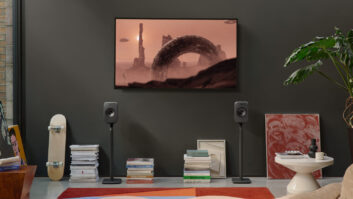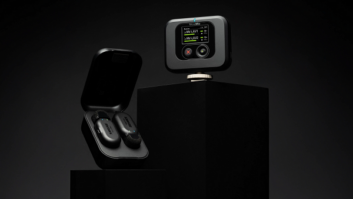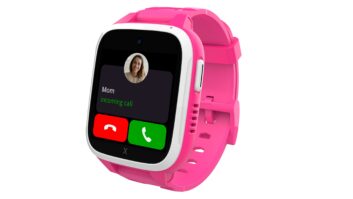New York – Gary
Shapiro, president/CEO of the Consumer Electronics Association (CEA), launched
the Declaration of Innovation, called for more spectrum dedicated to
wireless broadband and discussed changes for the 2012 International CES in a
speech this morning.
is an online pledge for Americans to
sign in support of policies that ensure innovation remains the strategic
advantage of the U.S., Shapiro said in his keynote at CES Line Show, here.
“As we prepare to celebrate our nation’s 235th birthday on
July 4, CEA’s Innovation Movement is calling on all Americans to sign our
Declaration of Innovation, pledging to return innovation to its rightful place
as the center of America’s economic policy,” he said.
The Declaration echoes the theme
of the CEA best-seller
“The
Comeback: How Innovation Will Restore the American Dream,”
authored by
Shapiro and the
— free trade, skilled immigration, spectrum and lower deficits.
The Declaration of Innovation specifically states:
“We believe American innovators
should be able to buy and sell their products around the world.
“We believe that more spectrum
must be available for wireless broadband.
“We believe in welcoming the best
and brightest minds to the United States.
“We believe in cutting the federal
deficit.”
He urged his audience to sign up,
saying, “235 years ago the Declaration of Independence was signed with a quill
pen and a jar of ink. Today, thanks to the innovations of this industry, you
can go to
and
sign via smartphone, tablet or PC, or by going to our Facebook page.”
He noted, “Join us … promote it. We owe it to our children:
a future that is as least as bright as our present.”
Shapiro said that the U.S. is in a
“spectrum crunch” and that spectrum is like “waterfront property… there is only
so much to go around” and that much of it is controlled by TV broadcasters.
Shapiro said that CEA, the Federal
Communications Commission, the Obama administration and the Republican party in
Congress are all backing legislation take back part of the TV broadcasters
spectrum and put it up for auction for wireless broadband use.
He highlighted some eye-opening
statistics on the need for more wireless spectrum:
-
Smartphones use 24
times as much spectrum as traditional cellphones.
-
Tablet PCs transmit
122 times the data of traditional cellphones.
-
Wireless usage will
multiply in the U.S. by 40 times in coming years.
-
By 2014 there will be
a 300MHz deficit in wireless spectrum.
CEA estimated that only 8 percent
of American households now rely solely on over-the-air TV broadcasts. Nielsen
just estimated that number at 9.6 percent.
Shapiro noted that broadcasters, who do not own the spectrum
they use since it has been provided to them free by the government since the
1940s, would under the proposed legislation in Congress, voluntarily give up
some of the spectrum and would share in the proceeds of the spectrum auction.
“The auction would provide the 300MHz we need by 2014 and
would provide the U.S. Treasury with $30 billion,” after broadcasters get a cut
of the proceeds, Shapiro said.
“TV stations would still have enough spectrum to cover 100
percent of all households in the U.S. TV broadcasts in the U.S. would not end,”
Shapiro stressed. “The auction would stimulate innovation and create economic
development.”
He added that that spectrum is “the lifeblood of innovation.
More video is downloaded onto YouTube in 60 days that what the major networks
have broadcasted in 60 years.”
Faster wireless networks, which are predicted in coming
years, “assumes that there will be hundreds of megahertz of spectrum coming
online.”
Shapiro also noted that the proposed auction would allocate
120MHz of unlicensed spectrum, which companies in the past have used to develop
such products as remote control garage door openers, Wi-Fi, baby monitors and
others. There would be an opportunity for entrepreneurs to develop “new
products with this spectrum we haven’t even thought of.”
He added that in 2015 “wireless will outpace wired broadband
usage. If you remember the days of waiting for dial-up” in the 1990s, the same
will be true in the wireless age. He said expanded wireless broadband is
“crucial for the further economic development of America.”
As for the 2012 International CES, Shapiro announced that
the National Science Federation and CEA have partnered on a new exhibit for the
show called “Eureka Park” — an exhibit area for small companies to display new
technology that will be commercially available in three years and products that
are not available on the market now.
“It has been one week since we reached out to companies to
see if there is an interest, and we have signed 28 firm,” with Shapiro
expecting more to come.
The 2012 show will be held Jan. 10-13, a Tuesday to Friday
show vs. the usual Thursday to Sunday schedule. Shapiro said this will appeal
to exhibitors and attendees since the dates are “pushed back” from the holidays
and will be appreciated by those who prefer weekday and not weekend travel.













